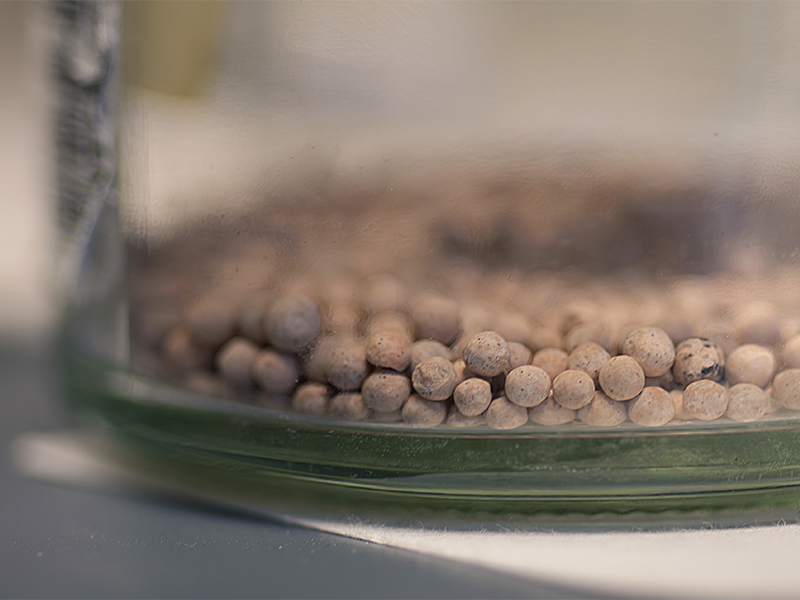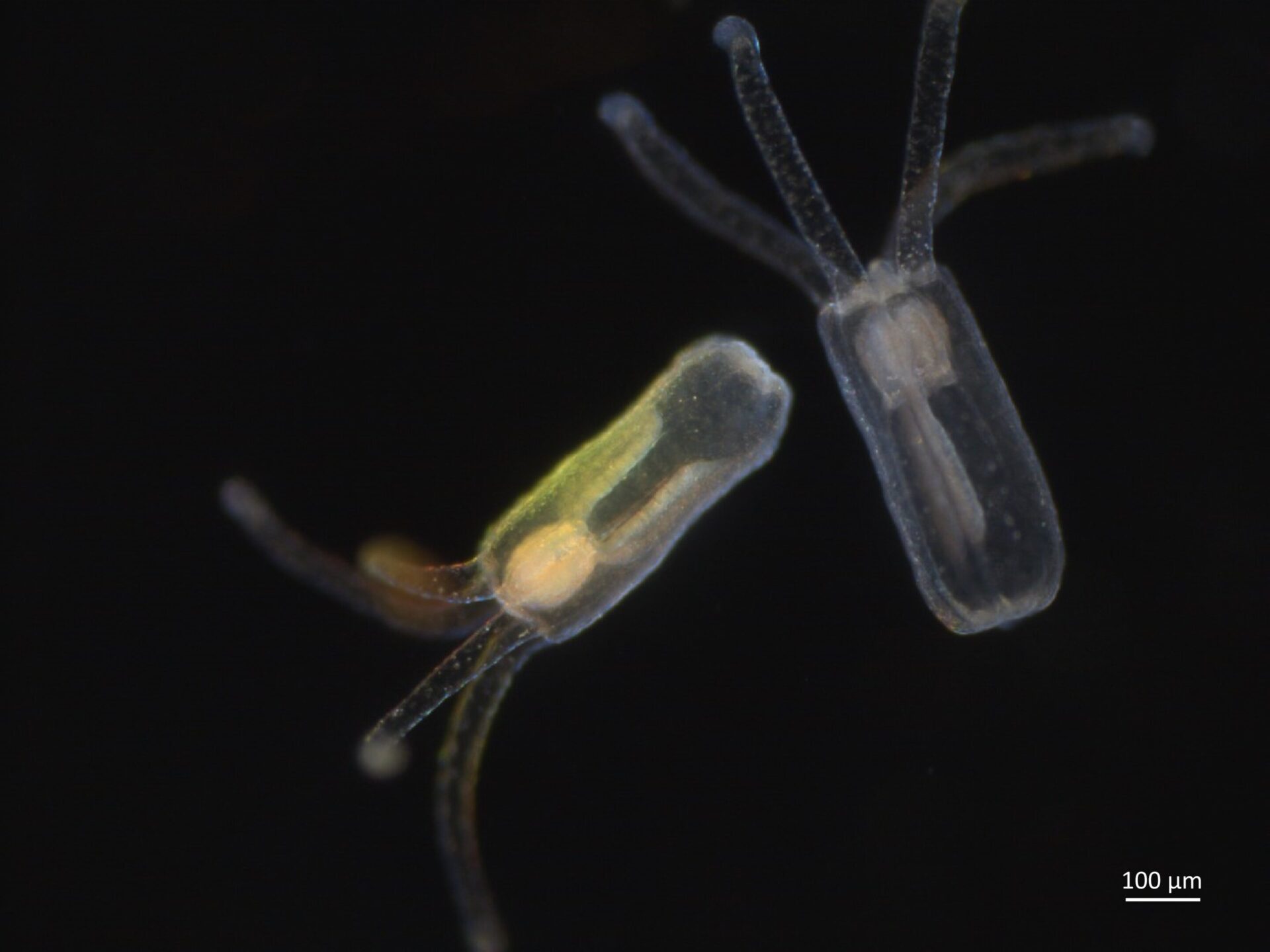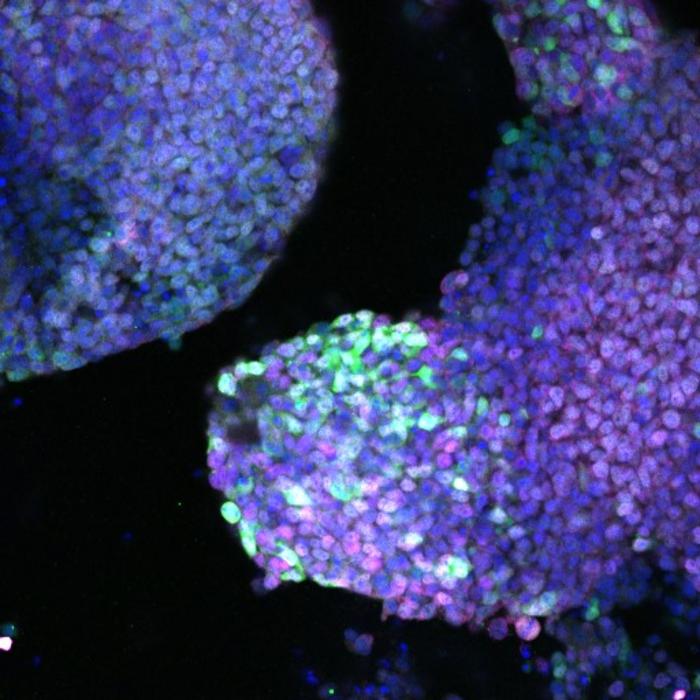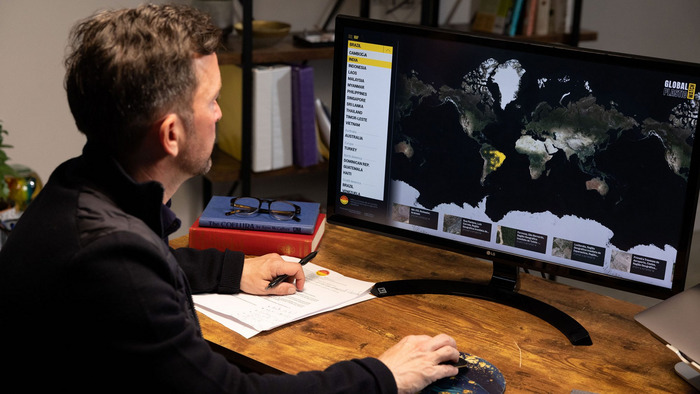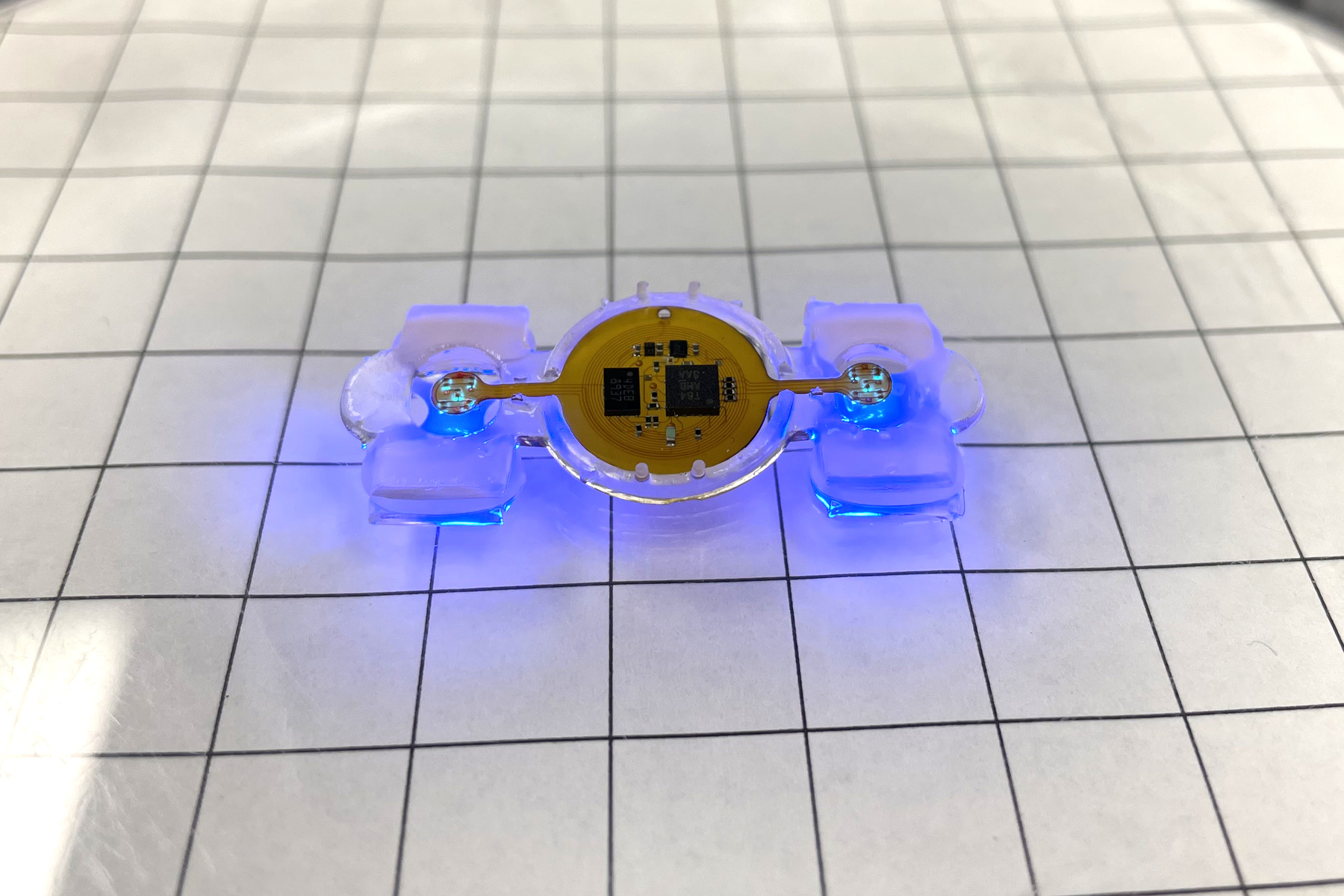
Remotely controlled miniature biological robots have many potential applications in medicine, sensing and environmental monitoring.
Image courtesy of Yongdeok Kim
First, they walked. Then, they saw the light. Now, miniature biological robots have gained a new trick: remote control.
The hybrid “eBiobots” are the first to combine soft materials, living muscle and microelectronics, said researchers at the University of Illinois Urbana-Champaign, Northwestern University and collaborating institutions. They described their centimeter-scale biological machines in the journal Science Robotics.
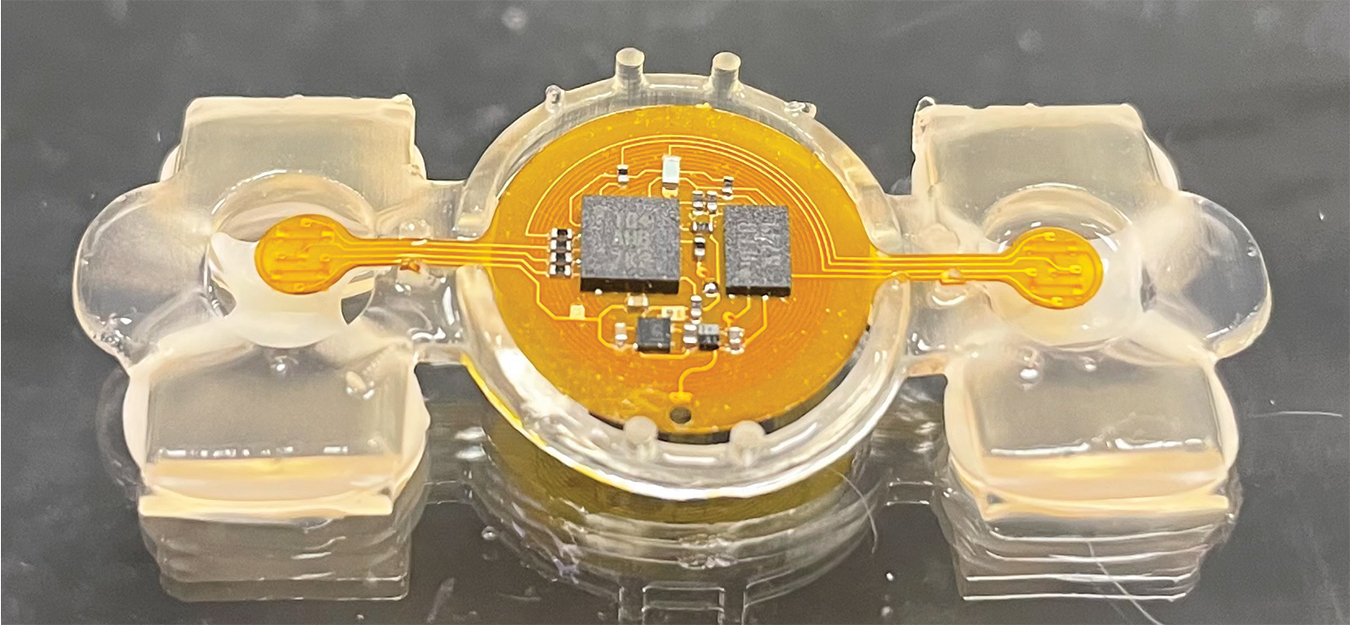
Image courtesy of Yongdeok Kim
The design allows for possible future integration of additional microelectronics, such as chemical and biological sensors, or 3D-printed scaffold parts for functions like pushing or transporting things that the biobots encounter, said co-first author Youngdeok Kim, who completed the work as a graduate student at Illinois.
The integration of electronic sensors or biological neurons would allow the eBiobots to sense and respond to toxins in the environment, biomarkers for disease and more possibilities, the researchers said.
“In developing a first-ever hybrid bioelectronic robot, we are opening the door for a new paradigm of applications for health care innovation, such as in-situ biopsies and analysis, minimum invasive surgery or even cancer detection within the human body,” Li said.
Original Article: Microelectronics give researchers a remote control for biological robots
More from: University of Illinois at Urbana Champaign | Northwestern University
The Latest Updates from Bing News
Go deeper with Bing News on:
Hybrid bioelectronic robot
- Best robot mops in 2024
Robot mops then add pressure and spin over stains for a sleek finishing touch that leaves floors sparkling. While you can always purchase a hybrid robot vacuum and mop design, the performance of ...
- Best Hybrid SUVs That Cost $35,000 to $45,000
Consumers shopping for an SUV would do well by not only considering a hybrid model but also focusing solely on one. That’s because today’s hybrids are more often than not better in nearly ...
- The Best Robot Mops for 2024
This allows the pricey 2-in-1 robot vacuum and mop hybrid to complete both tasks in a single cleaning run. A common critique about Roborock's similar VibraRise system, available on the S7+ and ...
- The Best Robot Vacuums for 2024
Robot vacuums with around 2,500Pa can still lift pet hair, but might need more passes to get it all. Dyson, which uses the less common metric of air watts, says its new 360 Vis Nav robot vacuum ...
- The 8 Best Robotic Pool Cleaners To Keep Your Pool Sparkling And Clean
Let's face it: Cleaning your pool isn't exactly the highlight of summer. However, having one of the best robotic pool cleaners can significantly ease the process. These autonomous machines ...
Go deeper with Bing News on:
eBiobots
- Robot caterpillar can twist and crawl
An origami form called a Kreslin pattern was used to build the robot caterpillar, allowing each segment to twist into a flattened disk and expand back into a cylinder. This twisting and expanding ...
- These astonishing biobots can help neurons regrow — but researchers have no idea how
Using a patient's own cells to construct biobots reduces the risk of triggering an immune response or needing immunosuppressants, the authors said. Anthrobots last between 45 and 60 days before ...
- Researchers Can Use Swarm of Insect Cyborgs to Map Unknown Areas (IMAGE)
or "biobots." Disclaimer: AAAS and EurekAlert! are not responsible for the accuracy of news releases posted to EurekAlert! by contributing institutions or for the use of any information through ...
- Self-replicating xenobots
Ultimately, they could even help us create biobots from our own cells which could possibly be used in the body to remove the need for surgery. That does sound pretty cool, right enough.
- Self-replicating xenobots
Ultimately, they could even help us create biobots from our own cells which could possibly be used in the body to remove the need for surgery. That does sound pretty cool, right enough.

